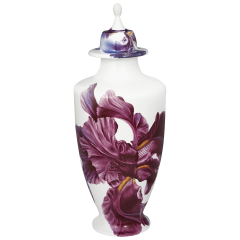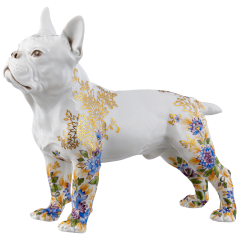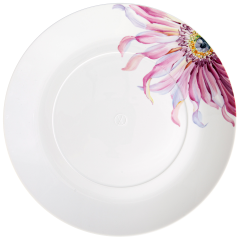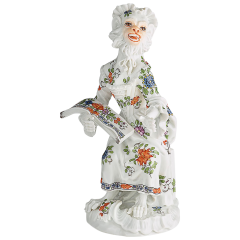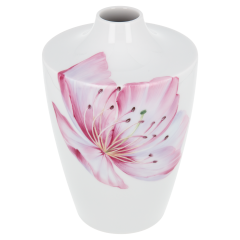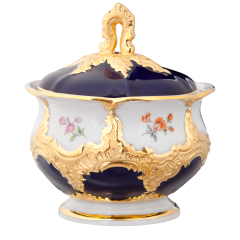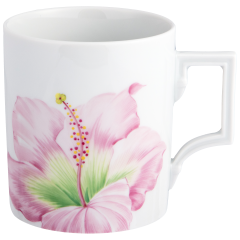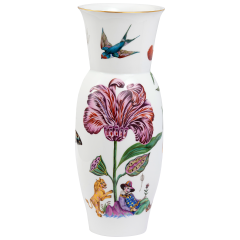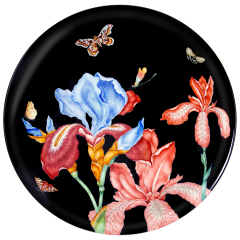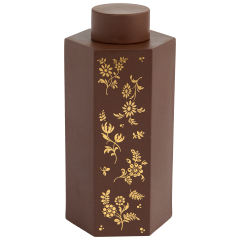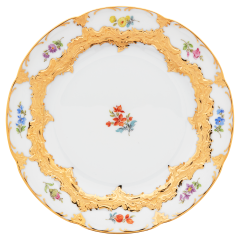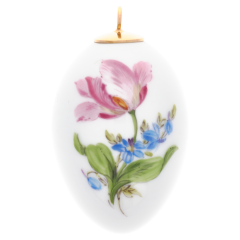Christmas Offer from MEISSEN – Enjoy Exclusive Savings! Learn More.
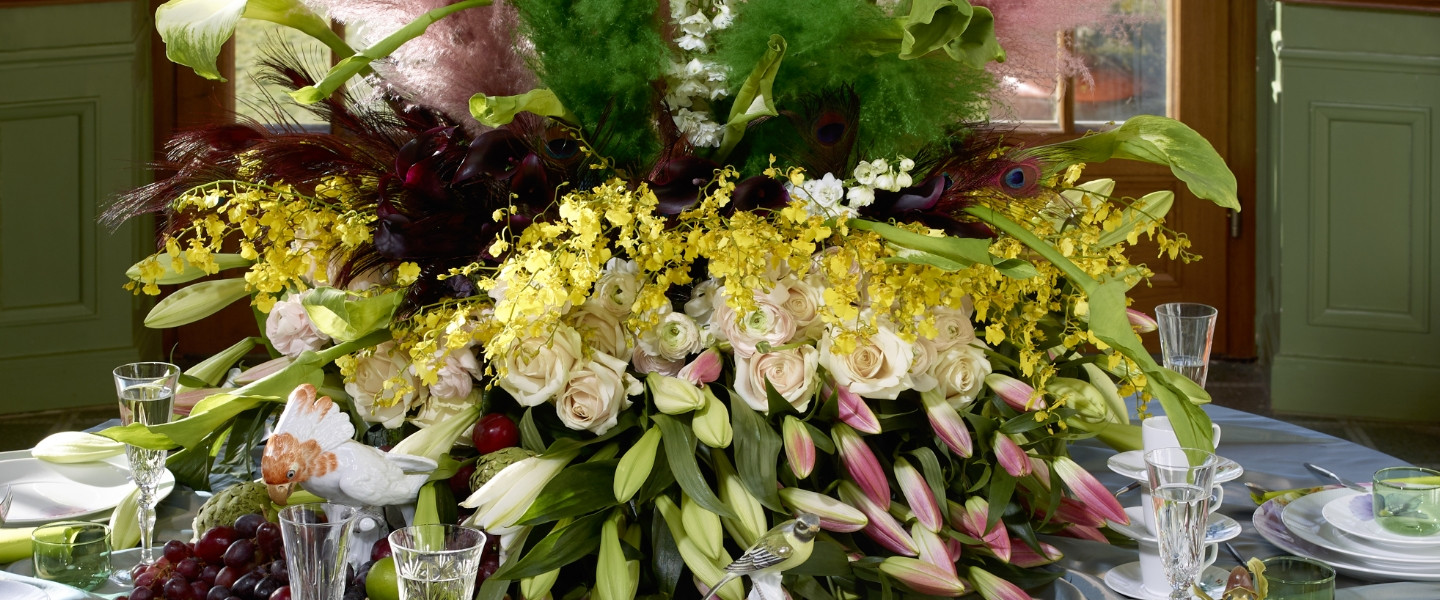
A symphony of flowers
-
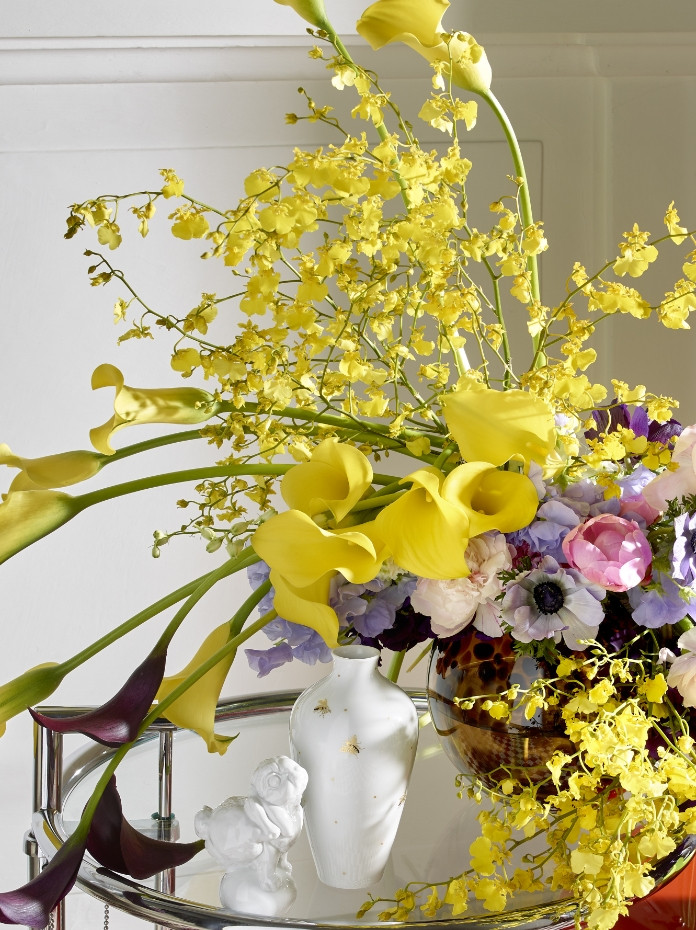 Since time immemorial, plants and flowers have accompanied the lives of humans and developed a rich trove of symbolic meanings throughout the ages. The first evidence of flowers and plants can already be found in Egyptian hieroglyphics. The first book on a language of flowers was published in 1819 by the Frenchwoman Charlotte de Latour, who derived each flower’s respective meaning from its appearance, scent and occurrence – according to whom the anemone stands for devotion and tenderness, the hyacinth for benevolence, delphinium on the other hand for superficiality, the sunflower for wealth. In the 18th and 19th centuries, the language of flowers finally became a lingua franca across Europe. First developed at this time, naturalistic flower painting at MEISSEN has since matured to the highest perfection as a genre in its own right. Flora and fauna are immortalised on porcelain with great artistic skill and in ever new variations: As large-scale paintings, as seen on the new "Giant Bloom" service, in iconic patterns such as the "Strewn Flowers", as lush bouquets or delicate tendrils on vases, plates, mugs, figurines and even tree ornaments.
Since time immemorial, plants and flowers have accompanied the lives of humans and developed a rich trove of symbolic meanings throughout the ages. The first evidence of flowers and plants can already be found in Egyptian hieroglyphics. The first book on a language of flowers was published in 1819 by the Frenchwoman Charlotte de Latour, who derived each flower’s respective meaning from its appearance, scent and occurrence – according to whom the anemone stands for devotion and tenderness, the hyacinth for benevolence, delphinium on the other hand for superficiality, the sunflower for wealth. In the 18th and 19th centuries, the language of flowers finally became a lingua franca across Europe. First developed at this time, naturalistic flower painting at MEISSEN has since matured to the highest perfection as a genre in its own right. Flora and fauna are immortalised on porcelain with great artistic skill and in ever new variations: As large-scale paintings, as seen on the new "Giant Bloom" service, in iconic patterns such as the "Strewn Flowers", as lush bouquets or delicate tendrils on vases, plates, mugs, figurines and even tree ornaments.
-
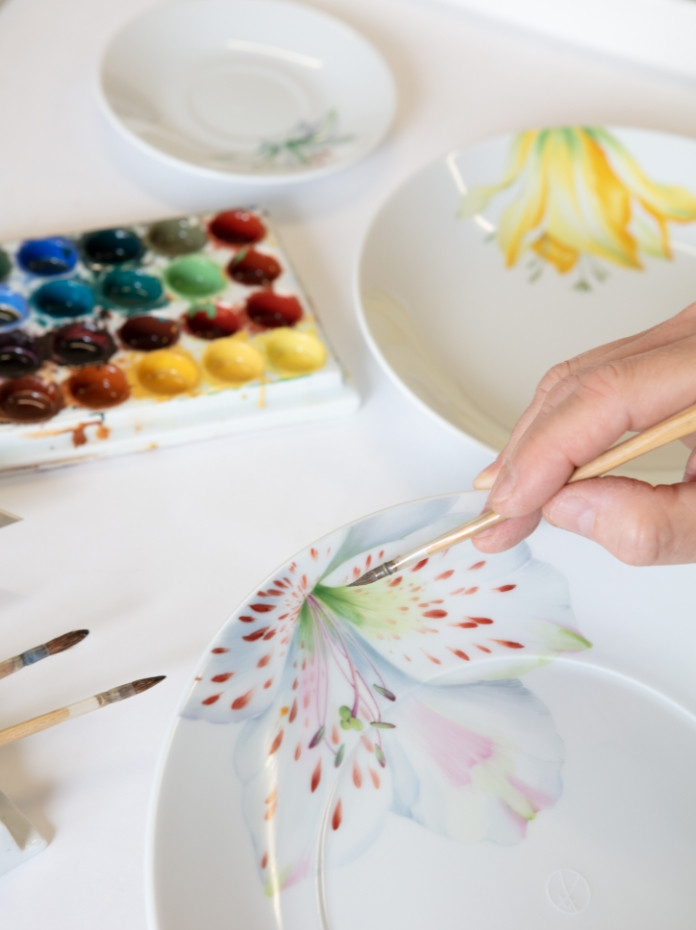 A bouquet as a thank you, a birthday gift, for Valentine's Day or flower arrangements and centrepieces for anniversaries or weddings – while the language of flowers has lost most of its intricacies over time, it has retained some important meanings and symbols that should be kept in mind – especially when gifting – today. For example, red roses have always been symbols of great love and passion, yellow flowers convey cheerfulness and optimism, whereas pure white bouquets are generally considered an expression of mourning. But not only the type and colour of flowers should be subject to thought and consideration; the size of the gift should also be taken into account. A good rule of thumb? The rarer the occasion, the more elaborate the arrangement without appearing excessive.
A bouquet as a thank you, a birthday gift, for Valentine's Day or flower arrangements and centrepieces for anniversaries or weddings – while the language of flowers has lost most of its intricacies over time, it has retained some important meanings and symbols that should be kept in mind – especially when gifting – today. For example, red roses have always been symbols of great love and passion, yellow flowers convey cheerfulness and optimism, whereas pure white bouquets are generally considered an expression of mourning. But not only the type and colour of flowers should be subject to thought and consideration; the size of the gift should also be taken into account. A good rule of thumb? The rarer the occasion, the more elaborate the arrangement without appearing excessive.
In interiors, on the other hand, a playful and unconventional use of colour, of forms and materials as an expression of one’s own personality is positively de rigueur – be it a lush eye-catching bouquet to greet guests or a more subtle arrangement to round out a laid table. Aside from the choice of flowers, vases in all their shapes and forms also play into people’s experience of any room: statement pieces, lavishly decorated with sculptural inlays and hand-painted artwork, as found in Meissen's Limited Masterworks editions, provide the appropriate stage for exuberant bouquets, while immaculate white vases and sleek shapes, such as can be found in the "MEISSEN® Cosmopolitan" collection, offer a blank canvas for creative arrangements.
The “Human Touch” style trend is a wonderful expression of the current zeitgeist: warm colours, organic, imperfect shapes and soft textures join forces to create a homely feeling in modern interiors. Light and dark earth tones, such as nude, terra and brown, are juxtaposed with natural colours, such as lilac and yellow – the latter also being one of the two Colours of the Year 2021. Almost all types of flowers also showcase a yellow varietal: the classics rose, tulip or primrose; spring florals, such as mimosa and daffodils, or marigolds, coneflowers and sunflowers in summer. Eye-catching bouquets often combine flowers with dried specimens and leafy plants. Flowy monochromatic bouquets also play a major role in this trend.
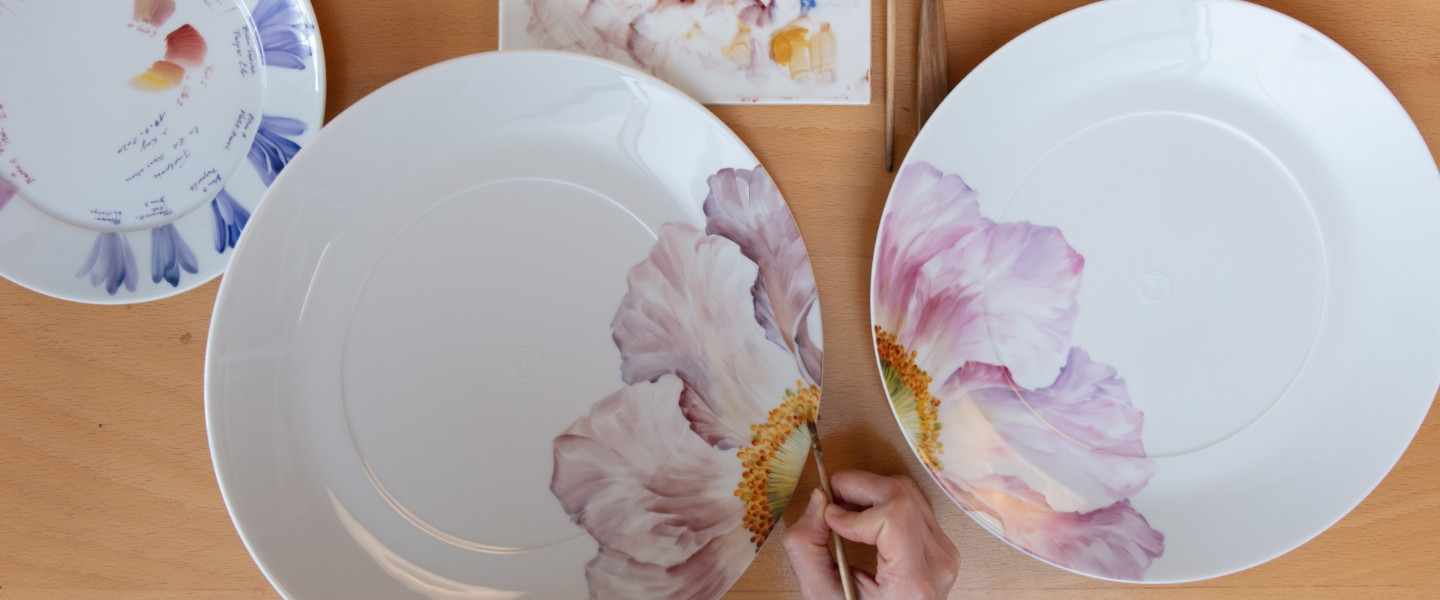
- 01
- 02
 Dog Bulldog, Blue Flowers, Lim. 100, H 16,5 cmDeliverable€4,193.00Excl. 0% VAT , excl. Shipping Cost
Dog Bulldog, Blue Flowers, Lim. 100, H 16,5 cmDeliverable€4,193.00Excl. 0% VAT , excl. Shipping Cost - 03
 Dinner Plate, large, Shape "MEISSEN® Cosmopolitan", "Giant Bloom", Gerbera, Ø 30 cmDeliverable€369.00Excl. 0% VAT , excl. Shipping Cost
Dinner Plate, large, Shape "MEISSEN® Cosmopolitan", "Giant Bloom", Gerbera, Ø 30 cmDeliverable€369.00Excl. 0% VAT , excl. Shipping Cost - 04
 Monkey Orchestra Songstress, Oriental Flower painting, H 12,5 cmDeliverable€5,454.00Excl. 0% VAT , excl. Shipping Cost
Monkey Orchestra Songstress, Oriental Flower painting, H 12,5 cmDeliverable€5,454.00Excl. 0% VAT , excl. Shipping Cost - 05
- 06
 Vase, Shape "MEISSEN® Cosmopolitan", "Giant Bloom", Peach Blossom, H 18 cmDeliverable€478.00Excl. 0% VAT , excl. Shipping Cost
Vase, Shape "MEISSEN® Cosmopolitan", "Giant Bloom", Peach Blossom, H 18 cmDeliverable€478.00Excl. 0% VAT , excl. Shipping Cost - 07
 Sugar Bowl, Shape "B-Form", strewn flowers, royal blue ground, bronze coloured, H 12 cmDeliverable€839.00Excl. 0% VAT , excl. Shipping Cost
Sugar Bowl, Shape "B-Form", strewn flowers, royal blue ground, bronze coloured, H 12 cmDeliverable€839.00Excl. 0% VAT , excl. Shipping Cost - 08
 Mug, "The MEISSEN Mug Collection", "Giant Bloom", Hibiscus, Shape "Berlin", V 0,25 lDeliverable€251.00Excl. 0% VAT , excl. Shipping Cost
Mug, "The MEISSEN Mug Collection", "Giant Bloom", Hibiscus, Shape "Berlin", V 0,25 lDeliverable€251.00Excl. 0% VAT , excl. Shipping Cost - 09
 Boerner vase, The Lion Garden, Olaf Hajek, H 34,5 cmDeliverable€20,587.00Excl. 0% VAT , excl. Shipping Cost
Boerner vase, The Lion Garden, Olaf Hajek, H 34,5 cmDeliverable€20,587.00Excl. 0% VAT , excl. Shipping Cost - 10
 Wall plaque "Iris on black background", lim. 10, Ø 46 cmDeliverable€23,949.00Excl. 0% VAT , excl. Shipping Cost
Wall plaque "Iris on black background", lim. 10, Ø 46 cmDeliverable€23,949.00Excl. 0% VAT , excl. Shipping Cost - 11
 Box, Golden flower garden, Böttger StonewareDeliverable€1,504.00Excl. 0% VAT , excl. Shipping Cost
Box, Golden flower garden, Böttger StonewareDeliverable€1,504.00Excl. 0% VAT , excl. Shipping Cost - 12
 Bread- and Butter Plate, Shape "B-Form", Strewn flowers, gold (bronze coloured), light, Ø 15,5 cmDeliverable€377.00Excl. 0% VAT , excl. Shipping Cost
Bread- and Butter Plate, Shape "B-Form", Strewn flowers, gold (bronze coloured), light, Ø 15,5 cmDeliverable€377.00Excl. 0% VAT , excl. Shipping Cost - 13
 Easter egg, Vintage Flower Painting 2, Tulip, H 4,5 cmDeliverable€142.00Excl. 0% VAT , excl. Shipping Cost
Easter egg, Vintage Flower Painting 2, Tulip, H 4,5 cmDeliverable€142.00Excl. 0% VAT , excl. Shipping Cost
-
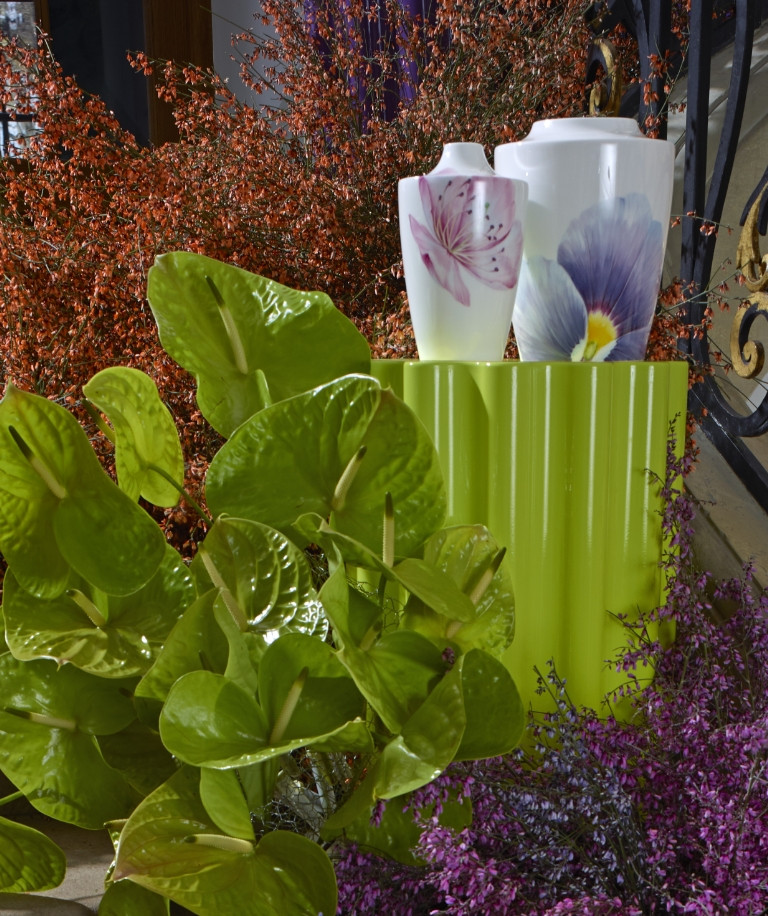 THE TREND COLOUR 2022: VERY PERILet the invigorating violet hue surprise you and create an inspiring atmosphere.
THE TREND COLOUR 2022: VERY PERILet the invigorating violet hue surprise you and create an inspiring atmosphere. -
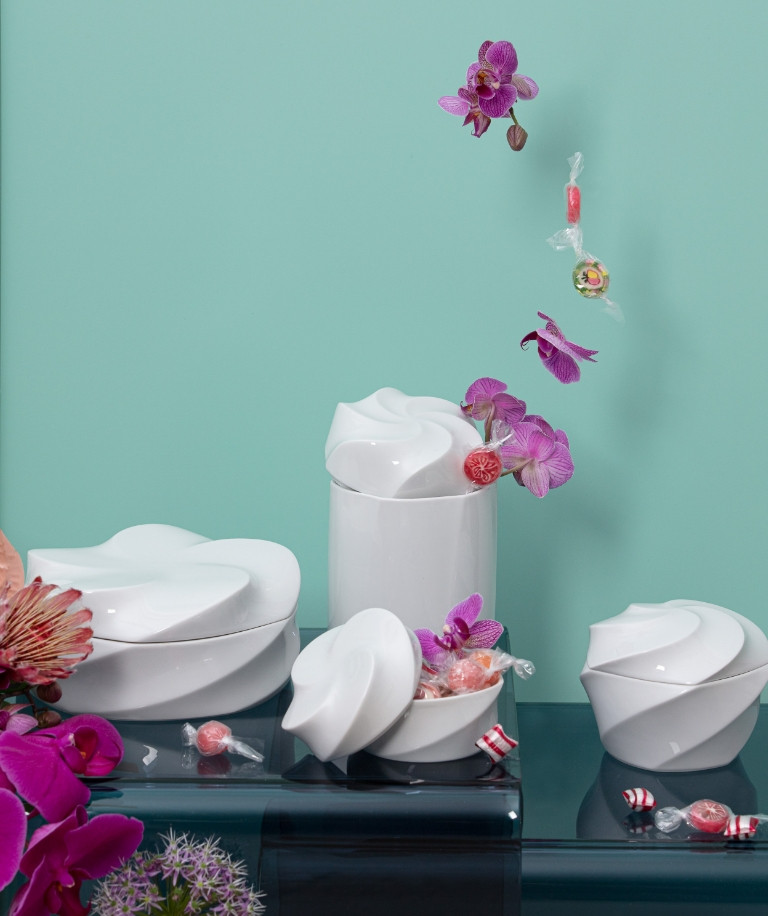 TWIST - SOFT CURVES FOR A COSY HOMEThe unique boxes by MEISSEN artist Zhuoyu Hou lend the room a harmonious ambience and set creative impulses.
TWIST - SOFT CURVES FOR A COSY HOMEThe unique boxes by MEISSEN artist Zhuoyu Hou lend the room a harmonious ambience and set creative impulses. -
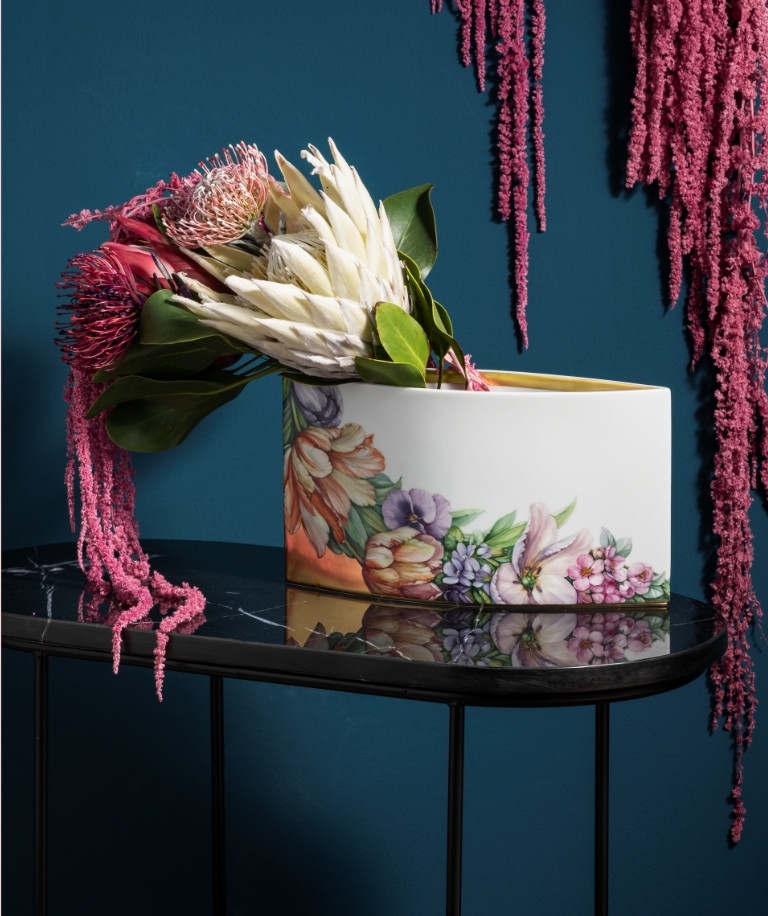 MEISSEN FLOWER PAINTINGFlower painting is deeply rooted in the history of the manufactory and continues to inspire till today.
MEISSEN FLOWER PAINTINGFlower painting is deeply rooted in the history of the manufactory and continues to inspire till today.
Subscribe to the newsletter
Get 10% discount* on your next online order
Do you have questions about the manufactory, our product range or special designs - we are happy to advise you!
Consultation hours:
Mon-Fri: 9am - 6pm
Sat: 10am - 4pm
X






